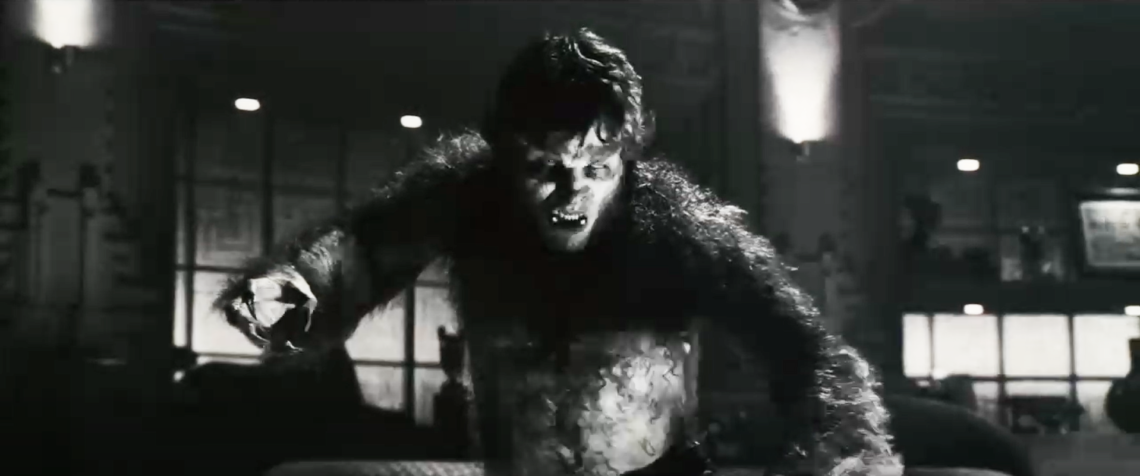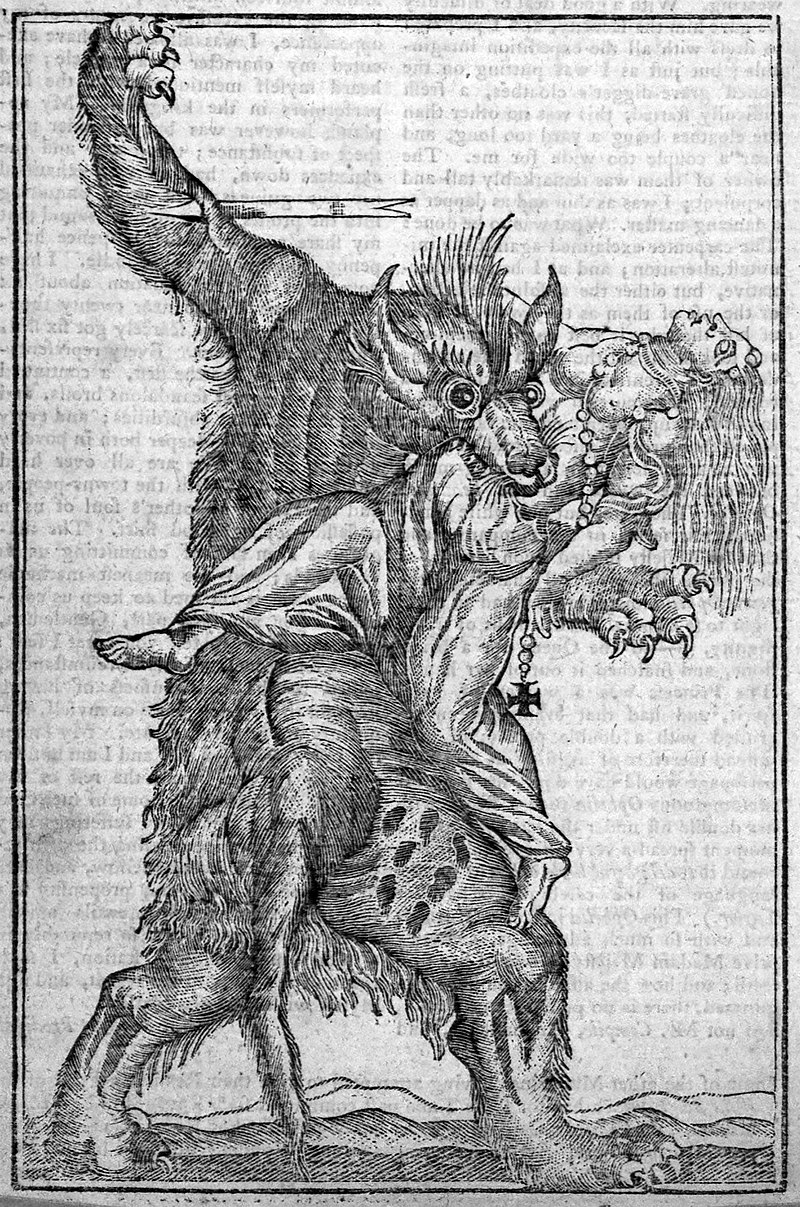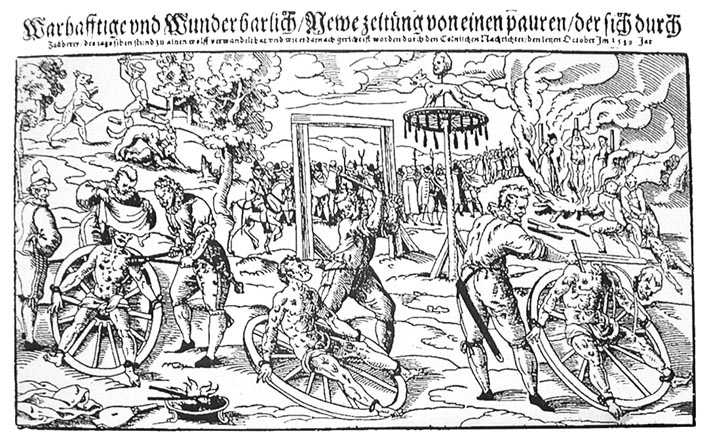
Werewolf by Night and Other Lycanthropic Tales
As we can already deduce from the pumpkin decorations, bats, and spiderwebs, Halloween night is approaching with its sweets, tricks and, above all, its frightening creatures. We celebrate it alongside Marvel with its brand-new special made specifically for this holiday: “Werewolf by Night.”
Speaking of lycanthropes, from the Greek λúkος, lýkos “wolf,” and ἄνθρoπος ánthropos “human,” here, we are limiting ourselves to the sense of individuals who take on the appearance of wolves and lose control. It would be an extensive topic, so we have selected stories that will send shivers down your spine because these are true episodes, reported in the chronicles and documents of past centuries.
So, get ready to shiver in this full-moon-night article.
The Werewolves of Poligny
In the region of Burgundy-Franche-Comté, on a plateau at the foot of a hill, surrounded by forests, stands the town of Poligny. It was the year 1521, and the cold winter had already arrived, with twilight descending early, and the first snowfall reflecting the eerie light of a pale full moon.
There was silence, and no one was wandering the streets anymore, except for the solitary figure of a farmer who was returning home later than his fellow villagers.
A shiver ran down his spine as he remembered the tragedy that had befallen his village for some time: several children and a woman had been devoured by a beast.
As the shadows grew longer and thoughts darker, suddenly, the gaping jaws of a wolf lunged at his throat.
However, the farmer was prepared and managed to fight back, even injuring the animal, which disappeared into the depths of the forest. Passing almost by chance in front of Michel Vurden‘s house, what he saw left him shaken. The man was tending to a wound identical to the one he had just inflicted on the wolf.
Brought before the authorities, after being interrogated and tortured, Michel Vurden admitted to having made a pact with the devil and having an accomplice, Pierre Bourgot. Together, transformed into wolves, they were not only the perpetrators of those murders but had also feasted on the corpses. For their crimes, these alleged werewolves and their families met their deaths at the stake.
The Hermit of San Bonnot
A few years later, the same French region was struck by another case of lycanthropy.
Following the death and mauling of several children, in September 1573, the parliamentary court of the town of Dole issued an edict to hunt down the werewolf that was terrorizing the region.

Just outside the town, in a cottage nestled in the woods, lived a man named Gilles Garnier. His appearance was rugged, and he and his wife lived in seclusion from the community, so much so that the townspeople had nicknamed him “The Hermit of San Bonnot“. On November 8, some men returning home heard cries coming from the forest. They rushed to the scene and witnessed a terrible spectacle: a girl had been attacked by a beast of disproportionate size, tearing into her flesh.
The arrival of the group scared the creature away, but due to the darkness, they couldn’t identify it, as it appeared part wolf and part human.
On November 14, near Dole, a ten-year-old boy disappeared, and this time the culprit was identified because only one person lived in the area.
Gilles Garnier was brought to trial and, under torture, he confessed to having transformed into a werewolf and feasting on the children he had killed (notably, following the religious calendar).
For his crimes, Garnier and his wife were sent to the stake on January 18, 1574.
An interesting fact: it so happened that in Dole, in 1822, Louis Pasteur, the inventor of the rabies vaccine, was born.
Peter Stubbe
“Tell me strange things,” was always the request of Augustus Montague Summers (1880 – 1948), an occultist and folklore scholar who indeed heard and recounted strange things, including the story of Peter Stubbe or Stumpp.
During his research, Summers came across a pamphlet translated from German dating back to 1590 and included the story in his book “The Werewolf in Lore and Legend”. In Bedburg, near Cologne, Germany, a series of terrible crimes were committed between 1564 and 1589: aside from various cattle being slaughtered, thirteen children and two pregnant women were also killed. In October 1589, as the creature was about to commit another crime, a group of men arrived and managed to wound the wolf, amputating its left hand. Despite this, the creature escaped, but when they caught up with it at its hideout, they found a man: Peter, who was missing his left hand, hence the nickname Stubbe or Stumpp, which means “stump.”
Under torture, the man confessed that he worshiped the devil and could transform into a wolf to devour his victims, including his son. He also admitted to committing incest with his daughter. His sentence was carried out on October 31, 1589, and he was subjected to the gruesome torture of the wheel.
However, it’s worth noting a small detail. Peter Stubbe was reportedly a Protestant, and in that region, during the struggle between Catholics and Protestants, Catholicism had ultimately prevailed. This historical context may be significant when evaluating the case.

Do Werewolves Exist?
Hoping to have both terrified and entertained you with these stories, it’s time to draw more rational conclusions. As you can see, the blame for these acts of brutality was often attributed to males, who, unable to be accused of witchcraft, were considered werewolves.

Just as with witches, the reported cases of lycanthropy and the subsequent trials and executions were often due to collective hysteria and the need to find a scapegoat, in this case, for the deaths of young people and women. Blaming a man, who could be easily eliminated through mob justice, rather than a wolf so hungry that it would attack humans, was certainly simpler and helped to quell fear. The tragic deaths of children probably did occur, but because they were often the most vulnerable, it’s easy to speculate that an animal (or a pack) by nature inclined to target weaker individuals was responsible. Notably, these incidents often occurred in winter when game was scarce and hunting became difficult even for wolves. For example, the famous “Beast of Gevaudan” that caused many deaths in central-southern France between 1764 and 1767 was likely, based on descriptions, not a wolf but possibly a hyena or a young lion.
However, it’s not coincidental that the belief in werewolves emerged mainly in northern countries and not in Mediterranean regions with a Greco-Roman tradition where wolves were not only fewer in number but also considered more sacredly positive (consider, for instance, that Apollo, the god of Light and the Arts, takes the appearance of a wolf, or the myth of Romulus and Remus being raised by a she-wolf. However, let’s not forget the myth of Lycaon). Moreover, it’s fair to say that rationality was more deeply rooted in those regions even during the darker centuries (though cases of lycanthropy did occur there too, of course).
Another consideration is that, just as with witch trials, the accused were often individuals afflicted with mental problems, living in isolation from the community or suffering from specific physical conditions, such as hypertrichosis. Furthermore, many people confessed to being in league with the devil and transforming into wolves under torture, often saying whatever their accusers wanted to hear.
Having said that, it’s essential to remember that mental illnesses and serial killers have always existed, so in some cases, perhaps some of them did indeed commit murder.
So, do werewolves exist? Certainly not in the cases mentioned above. But in the end, to borrow a phrase from the Shadowhunters, we like to think that all legends are true.
Opinion on “Werewolf by Night”
To conclude, here are some thoughts on the Halloween special, “Werewolf by Night.”
In my opinion, this Halloween special served its purpose, which is to entertain for a while with a somewhat different style. The elements of thrill and fear are not present, but that was to be expected, after all, we are talking about Marvel.
What I didn’t like, in reality, was Jack’s transformation into a werewolf. Instead of a werewolf, he looks more like a poorly done man-monkey, and his fighting style is clichéd and repetitive, similar to that of Captain America, Black Panther, Hawkeye, and all those with hand-to-hand combat abilities. In short, I expected something more animalistic and wolf-like.
I also wasn’t too fond of the color change filter at the end of the film, transitioning from black and white to color, but these are stylistic choices. In conclusion, however, it’s a short film with no particular pretensions, suitable for watching on Halloween night.
Sources
- https://archive.org/details/TheWerewolfInLoreAndLegend/page/n15/mode/2up?q=peter
- https://www.google.com/books/edition/The_Book_of_Were_wolves/m4EAAAAAMAAJ?q=&gbpv=1#f=false
- https://historycollection.com/the-haunting-last-messages-from-the-titanic/
- https://www.jstor.org/stable/43291376#metadata_info_tab_contents
- https://www.betedugevaudan.com/v1/it/index_it.html





